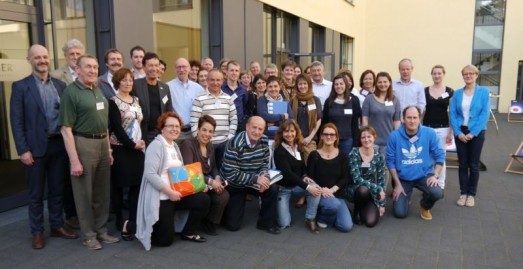German Gymnastics Federation closes ActiveAge project with launch of new resources
29/05/2014

Sports organisations should be ready to serve a new target group of inactive older people which is growing in size all over Europe. That is why ISCA member German Gymnastics Federation (DTB) used the final conference of its EU preparatory actions-supported ActiveAge Project, which took place from 27-29 March in Frankfurt am Main, Germany, as a launching pad for two new tools that will give grassroots sport organisations guidance and networking opportunities to create more physical activity opportunities for the elderly.
The 18-month Europe-wide ActiveAge Project aimed to build awareness and capacity in the field of active aging. The project focused on the following three main points:
- Strategic planning and implementation
- Recruitment and education of instructor
- Target groups differentiation and fitting exercise programs
At the closing conference the ten project partners (sports organisations from different European countries) presented the results of their work during the ActiveAge Project. These results are also brought together in the handbook Capacity Building for Physical Activity of Older People. The handbook contains recommendations, guidelines and practical tools to create and implement strategies and programs of active aging in sport organisations. Furthermore examples of good practice programs give realistic ideas and suggestions for sports organisations, clubs, or individuals to get involved.
The partners developed a strategy for future actions during the closing conference together with other sport organisations that were not partners in the project, but are also operating in the field of sports for all. The European Platform Active Aging in Sport (EPAAS) will be established to create an ongoing exchange of knowledge and experience and to pave the way for further cooperation. The platform will be provided by the International Sport and Culture Association (ISCA).
Visit DTB’s website to access all the resources from the ActiveAge project
Posted on 29/05/2014 by

